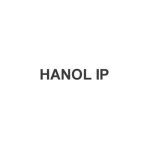The number of artificial intelligence (AI) patent filings has grown rapidly in Korea recently. In line with this trend, the Korean Intellectual Property Office (KIPO) updated its Examination Guidelines for AI Inventions in early 2022.
This article explains the most recent AI patenting practices in Korea based on these updated guidelines.
Patent eligibility issue and acceptable claim formats
In Korea, the Patent Act defines an invention as “a highly advanced creation of a technical idea utilising the laws of nature”. Therefore, to be patent eligible, AI inventions must also satisfy this requirement.
Not just for AI inventions but for general purpose, the examination guidelines provide examples of what are not considered as inventions, such as the laws of nature per se, computer programs, artificial decisions, and human mental activities.
In practice, patent eligibility for AI inventions is treated substantially the same in Korea as that for computer-implemented inventions. To avoid ineligibility, AI inventions (as well as computer-implemented inventions) become patent eligible only when:
Information processing is performed by a “combination of software and hardware”; and
The claims do not involve a “human mental activity or offline activities”.
Unlike some other countries, in Korea, eligibility is assessed without consideration of prior art.
Consider the following claim, which may not be patentable in Korea because the claim does not disclose hardware components, and/or the collection step may involve a human offline action.
A method for automatic temperature control using a machine learning model, comprising:
Collecting weather information on at least one of temperature, humidity, wind speed, and cloudiness; and
Training the model based on weather information as input data and temperature control parameters as output data.
In a way, an eligibility issue is closely related to the type of claim format. AI inventions can be drafted with a method or a product claim.
Focusing solely on the claim format, there is nothing special about method claims in Korea. However, for product claims, the KIPO generally accepts the following claim formats, but does not accept others, such as a program product and program signals.
An apparatus (device) using a training model.
A computer-readable medium with a program recorded therein.
A computer-readable medium with a data structure recorded therein.
A computer program or application stored in a computer-readable medium.
A computer program for implementing a training model stored in a computer-readable medium.
Enablement issue
In addition to the general explanation of enablement, the updated guidelines provide more specific guidelines for AI inventions:
The specific means for implementing an invention (for example, training data, data pre-processing, learning models, and loss functions) should be disclosed in the description and claims unless a person of ordinary skill in the art (POSITA) can clearly understand them.
The correlation between the input data and the output data of the learning model should be disclosed in the description, unless a POSITA can clearly understand the same.
If a conventional machine learning method or algorithm is employed, it is not necessary to specifically describe the same.
For example, if a claim describes a “step of generating a learning model by… using training data for controlling a temperature”, in order to be enabled with regard to the first item above, the claim needs to specify the training data – for example, “training data which comprises exterior temperatures… as input data, and temperature control parameters as output data” – unless a POSITA can clearly understand them.
Inventiveness issue
In Korea, an inventive step is determined by evaluating whether there is (i) difficulty in constituting the technical features of an invention and (ii) a remarkable or unexpected effect over the prior art.
In the examination guidelines, the KIPO classifies AI inventions into three categories:
An AI training data invention;
An AI modelling invention; and
An AI application invention.
The inventiveness of these groups of inventions is generally assessed according to the following guidelines.
For an invention featuring training data, an inventive step may be recognised if the claim describes in detail how raw data is processed (for example, through (i) the extraction of primary attributes; (ii) data standardisation, normalisation, or vectorisation; and (iii) data increment) and an unexpectedly advantageous effect is achieved from the features of the training data.
For an AI modelling invention, an inventive step may be recognised if the claim specifically defines the configuration of a training model (for example, through configuration of a training environment, evaluation of the training model, the linking of multiple models, distributed or parallel processing, and optimisation of hyper-parameters), and there is an unexpectedly advantageous effect resulting from such configuration.
When an AI invention is featured by a new application, an inventive step may be recognised:
If the invention has resolved a long-term problem or technical difficulty in the specific industrial field; or
If unexpectedly advantageous effects are found from its application to a different industrial field.
Global AI patenting
AI patenting has a relatively short history in the intellectual property (IP) world, and its rules and guidelines are frequently updated. In a way, it is natural that the practice around the world is quite diverse.
Understanding the most up-to-date practice may be helpful to anyone who is interested in AI patent filing in Korea.












